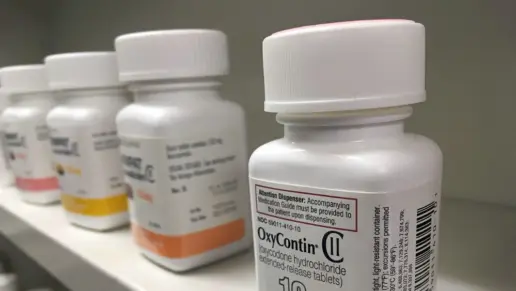Benzodiazepines are also called “benzos” and are a class of CNS depressant medications used to treat anxiety disorders and insomnia and manage seizures and withdrawal from alcohol. Read further to learn what benzodiazepines are, what leads to benzodiazepine addiction, and the different ways they are misused.
You’ll understand how benzodiazepines function in the brain, how tolerance and dependence develop and what withdrawal looks like. Finally, you’ll find evidence based treatment options and relapse prevention methods alongside tips for selecting facilities that best meet your needs.
Key Facts on Benzodiazepine Addiction
- Benzodiazepines activate GABA-A receptors. This calms the brain but risks include tolerance, dependence and addiction.
- Withdrawal symptoms may include seizures, insomnia, and autonomic hyper-arousal.
- Medical detox uses cross-tapering, gradual dose reductions, adjunctive treatments and therapy for safe withdrawal.
- Treatment involves inpatient/outpatient rehab using behavioral and holistic therapies for co-occurring disorders.
- Pregnant people, older adults and adolescents require unique treatment protocols due to distinct risks.
- Post-treatment care with peer support and follow-up monitoring is essential for preventing relapse and maintaining recovery.
What are Benzodiazepines and Why Do They Become Addictive
Benzodiazepines are depressant drugs with hypnotic and relaxing properties. Benzos can help patients with sleep disorders, relieve anxiety and reduce seizures but are often obtained illegally and misused.
Benzos are generally safe to use when prescribed by a doctor and taken for a limited time but become potentially addictive and dangerous when used long term or when taken in higher doses or more often than prescribed.
Benzodiazepine addiction in the U.S. is an increasing problem and has been for some time. In 2013 benzodiazepines were involved in 31% of the 22,767 fatal drug overdoses.
This problem has continued to grow. The risks associated with benzodiazepine abuse are often overshadowed in the news by a focus on the opioid addiction epidemic. It’s crucial to see how benzos are misused, what it means to be addicted and the available treatment options.
How Do Benzos Work?
Benzodiazepines work on one of the three brain receptors (A, B and C) for gamma amino butyric acid (GABA). This is the most common neurotransmitter in the central nervous system. After taking benzos this neurotransmitter interacts with the GABA-A receptor and creates a calming effect by reducing brain activity.
Benzos are prescribed for many conditions with unwanted brain activity due to their calming effect on the brain. These include sleep conditions such as insomnia and narcolepsy, seizures associated with conditions such as epilepsy and anxiety. Evidence also suggests that benzos can be effective in treating alcohol withdrawal.
Benzodiazepines have addictive properties because they cause the release of dopamine in the brain. Dopamine is a hormone responsible for feelings of pleasure.
This cycle of taking a drug and feeling pleasure from it leads to the user wanting to take more to replicate their experience. Over time, the brain relies on benzos to cause a surge in dopamine and no longer produces as much of it naturally. Reduced dopamine levels can lead to depression and other mental disorders.
Types of Benzodiazepines
Benzodiazepine medications are used to treat different disorders. The most suitable for a given condition depends on several factors including half life. A medication’s half life refers to how long it takes for half the dose to be eliminated from the blood. Half life length depends on how quickly the substance is absorbed and distributed in the body.
The Ashton Manual officially titled Benzodiazepines: How They Work and How to Withdraw written by professor Heather Ashton offers a standard outline for helping patients withdraw from benzos. Ashton provides the half-life of various benzos.
Half life falls into three categories:
- Ultrashort half life benzos: These have a half-life of up to 5 hours. Halcion (triazolam) has a half life of between 1.5 and 5 hours. These benzos are often used to treat insomnia. They’re active in the body for between 3 and 10 hours so their effects are less likely to continue into the following day.
- Intermediate and short-acting benzos: These have a half life of between 5 and 24 hours. Xanax (alprazolam) is a well-known brand name of a benzo that falls within this category. It’s used to treat anxiety disorders.
- Long half-life benzos: These have a half-life of 24+ hours. This means it can stay in the body 100s of hours but its noticeable effects are typically much shorter than that. These benzos are used to treat conditions that require more consistent symptom control such as certain types of anxiety disorders and seizure disorders rather than short term bouts of insomnia. For anxiety or seizures the benzo often must be active for more extended periods. An example of a long acting benzo is Dalmane (flurazepam) which has an extraordinarily long half-life of up to 11 days.
Other examples of benzodiazepines and some of their prescribed uses are:
Sleep disorder treatments:
- Klonopin (clonazepam)
- Ativan (lorazepam)
- Restoril (temazepam)
Anxiety disorder treatments:
- Valium (diazepam)
- Klonopin (clonazepam)
- Librium (chlordiazepoxide)
Seizure treatments:
- Rivotril (clonazepam)
- Onfi (clobazam)
- Ativan (lorazepam)
Alcohol withdrawal treatment:
- Valium (diazepam)
- Librium (chlordiazepoxide)
- Serax (oxazepam)
Who Is Most at Risk? (Age, Mental-Health, Polydrug Use)
Approximately 5.2% of U.S. adults aged 18 to 80 used benzodiazepines.
A 2008 study was conducted to identify the demographics of those who use benzos in the U.S. Key findings included that approximately 5.2% of U.S. adults aged 18 to 80 used benzodiazepines. Benzo use increased incrementally with age from 2.6% at age 18 to 35 to 8.7% at age 65 to 80.
Furthermore, long term benzo use of not less than three consecutive months also increased with age. Twice as many people used them long-term at age 65-80 years (31.4%) than at age 18-35 years (14.7%).
Women were also nearly twice as likely to use benzos than men. More recently the National Survey on Drug Use and Health (NSDUH) 2020 identified the same trends.
Health Risks of Long-Term Benzo Misuse
All forms of substance abuse have risks associated with long-term use. They pose risks to the user’s health or have detrimental effects on their life and overall well-being. In the case of benzos any side effects are often manageable when they’re taken in the prescribed dose for the prescribed length of time.
If benzos are taken in high doses or for an extended period then users may suffer from prolonged and enhanced withdrawal symptoms and long-term health implications.
The Centers for Disease Control and Prevention (CDC) reported that prescription and illicit benzo overdoses rose as fatal and nonfatal benzodiazepine overdoses increased from 2019 to 2020. Examples of short and long term risks associated with the use of benzodiazepines are as follows.
Health Risks of Short-Term Use of Benzodiazepines
Here are some short-term side effects of benzos:
- Short term memory loss
- Mood swings
- Erratic behavior
- Blurred vision
- Confusion
- Excessive drowsiness
- Slurring
- Weakness in muscles
- Shallow breathing
- Reduced motor skills
In addition some side effects of benzodiazepines are more prevalent in certain users:
People over 80
There is an increased risk of falls leading to injury for elderly users of benzos. Studies have shown that short acting benzos are less likely to be associated with falls and hip fractures so they’re more frequently prescribed to older adults than long-acting benzos.
Pregnant people
Benzo use during pregnancy increases the risk of premature birth and low birth weight.
Health Risks of Long Term Use of Benzodiazepines
If benzos are taken for an extended period then users report several withdrawal symptoms when benzos are stopped abruptly. Some of these are related to the condition or conditions they were being treated for like insomnia and anxiety. Additional symptoms consist of the following:
Physical withdrawal symptoms in long-term benzo use:
- Headaches
- Sweating
- Heart palpitations
- Tremors
- Muscle pain
- Nausea and diarrhea
Psychological withdrawal symptoms in long-term benzo use:
- Anxiety and depression
- Panic attacks and panic disorder
- Irritability
- Being unable to concentrate
- Feelings of confusion
- Lack of emotions and a feeling of dullness
- Feeling isolated and unconfident
- Dizziness
- Tinnitus
- Hallucinations
- Memory problems including substance-induced anterograde amnesia
- Inability to assess risk leads to poor decision-making and risky behavior
The effect on the brain due to long-term use of benzos is particularly concerning. Researchers have found evidence of cognitive dysfunction occurring among patients undergoing long term care with benzodiazepines. Even with benzos withdrawn patients didn’t return to the same level of functioning as those who weren’t treated with benzos.
Benzodiazepine Overdose
A recently updated study identified that if benzodiazepines are ingested alone then they’re rarely associated with poor outcomes. However, should an overdose occur then the user generally displays signs of benzo toxicity and central nervous system depression. This can cause a decreased heart rate and breathing rate and potentially lead to a loss of consciousness. In the case of a benzo overdose victims are usually still conscious or arousable.
The greater risk of overdose leading to long term health complications or death comes when benzos are taken alongside other substances. The National Institute on Drug Abuse reported that between 1999 and 2017 overdose deaths involving benzodiazepines steadily increased from 1,135 to 11,537.
Many of these deaths involved other substances such as:
- Benzos and alcohol: One very common and dangerous combination is when someone takes benzos and alcohol simultaneously. As depressants alcohol and benzos together can cause difficulty breathing, damage the brain, heart and other organs and death.
- Benzos and stimulants: Some users think they can cancel out the effect of stimulants by taking depressants such as benzos or vice versa. There’s no way of knowing how the drugs react with each other. They can also mask each other’s effects and it’s easy to be unaware of their impact, take more and overdose.
- Benzos and opioids: Opioids such as methadone and fentanyl are also depressants. Both substances can cause sedation and slow breathing, respiratory failure and potentially death It’s highly likely that these outcomes will occur when the two drugs are used simultaneously.
In 2020 16% of opioid overdose deaths also involved benzodiazepines.
Recognizing Benzodiazepine Addiction in Yourself or Others
Benzodiazepine addiction isn’t necessarily as apparent as other drug abuse. Many users of benzos don’t realize or acknowledge that they’ve become addicted to their medications. This is because many believe that they can’t cope without it.
The side effects are often manageable so users might not be aware of the long term impact of benzodiazepines on their lives and those around them. Many withdrawal symptoms are psychological rather than physical which means that you need to look for behavioral changes rather than physical ones.
Examples of signs to keep in mind are:
- Mood changes: Benzo use and the subsequent withdrawal symptoms can cause a person to be more irritable than usual. They may become confrontational or display rapid mood swings.
- Lethargy: As depressants benzos are used to sedate the body which can lead to acute drowsiness and lethargy. They may oversleep and lose interest or motivation in activities that they previously enjoyed.
- Uncommunicative: If someone has a benzodiazepine addiction then they may fear being judged or criticized for their actions. To avoid this situation they distance themselves from friends and family. This makes it challenging to hold a conversation with them.
- Declining performance at work or school: If someone’s benzo use has become a dependency then they may find it difficult to focus on or commit to anything else. They may become preoccupied as they’re feeling unwell due to withdrawal symptoms or are experiencing cravings for more.
- Financial problems: Benzos are relatively inexpensive especially if obtained by prescription with insurance but regular ongoing use can still add up. Money troubles can be a sign that someone is spending their money on drugs.
- Increasing use: As someone uses more of a substance they develop a tolerance to it. The user may need to take higher doses of benzodiazepines or use them more frequently to obtain the desired effect.
- Seeing multiple doctors:It’s recommended that benzos are only prescribed in durations of no more than a few weeks to reduce the risk of addiction and long term health implications. Physicians are usually reluctant to prescribe benzos long-term so some users will see multiple doctors to obtain a larger supply.
- Being unable to stop: If you or your loved one has tried to stop or reduce your use of benzos but failed to then this is a sign that you’ve developed an addiction and need professional help to overcome it.
Understanding Benzo Withdrawal
It’s important to understand the process of withdrawal when stopping or tapering off benzodiazepines either for yourself or when assisting someone else. Stopping benzo use via cold turkey isn’t only uncomfortable but it can also lead to dangerous complications if not properly managed.
Why Abrupt Cessation Is Dangerous
The withdrawal process from benzodiazepines exists in two phases. First you’ll experience acute symptoms (days 1-10) followed by protracted withdrawal that can continue for weeks to months.
If people suddenly stop taking benzodiazepines then they can face some serious risks like seizures and autonomic hyper-arousal due to the loss of GABA signaling. Known as the kindling phenomenon each unmanaged detox session can lead to progressively worse withdrawal severity for future detoxes.
Acute Withdrawal Timeline and Symptom Chart
Acute Withdrawal Timeline & Symptoms:
Days 1 to 4
Symptoms of acute withdrawal during the first four days start with severe anxiety spikes, tremors and insomnia.
Days 5 to 10
Sensory distortions and seizure risk develop. Gradual tapering procedures with dose adjustments based on symptom monitoring lead to a decrease in symptom severity.
Post-acute Withdrawal Syndrome (PAWS) and Rebound Anxiety
Post-acute Withdrawal Syndrome (PAWS): PAWS continues beyond acute symptoms to create cognitive fog as well as dysphoria and sleep instability that can last for weeks or months.
Neuroplasticity recovery benefits from cognitive-behavioral interventions (CBT-I) to address both cognitive and behavioral aspects of sleep disturbance. CBT-I helps people identify and change unhelpful thoughts and behaviors that sustain PAWS symptoms by teaching coping strategies and helping develop healthier habits.
Structured therapeutic approaches and lifestyle interventions play a big role in helping with withdrawal symptoms. Strategies such as regular exercise practice, omega-3 nutrition and mindfulness techniques can help improve sleep quality, support neurological recovery and manage stress.
Benzodiazepine addiction and PAWS recovery are a long process that require time, patience, self-care and multiple treatment approaches. Through ongoing support and consistent engagement individuals can significantly improve symptoms and quality of life.
Evidence-Based Treatment Pathways
Benzodiazepine addiction recovery isn’t only about stopping the medication. A structured, evidence based treatment plan with compassion is important for recovery.
Medically Supervised Detox and Taper Schedules
Initial treatment involves medically supervised detox that addresses urgent physical and psychological withdrawal.
Common approaches to support a safe taper include:
- Switching to longer-acting benzodiazepines like diazepam or clonazepam followed by gradual dose reduction.
- Switching to a barbiturate or other anticonvulsant mediation such as phenobarbital followed by gradual dose reduction.
- Reduce dose by 5-10% every 1-2 weeks as guided by symptoms
- Using micro-tapering or compound pharmacy solutions for severe sensitivity or complex needs
These tapering strategies help reduce withdrawal severity especially in those prone to extended withdrawal symptoms.
Inpatient Residential Rehab (When and Why)
After detoxing some individuals may need additional stabilization and support.
This can include:
- 24/7 monitoring for individuals with a seizure history, high-dose dependence or poly-drug use.
- Inpatient rehab that integrates medical, psychiatric and holistic treatments under one roof. This setting helps clients stay on track through continuous monitoring in early recovery.
Outpatient/IOP and Virtual Care Options
After detoxification some individuals require further stabilization and support.
This can include:
- 24/7 monitoring for individuals with a seizure history, high-dose benzodiazepine dependence or multiple drug use.
- Virtual and outpatient care options for those with stable housing and less severe addiction for flexibility and access.
Outpatient and virtual care can be just as effective when structured properly to fit the client’s needs.
Medication Assisted Supports (e.g., Gabapentin, Clonidine, Flumazenil Protocols)
Medical practitioners commonly use pharmacological treatments during tapering and recovery to manage withdrawal symptoms and support neurological stability.
This includes:
Gabapentin
Gabapentin to treat pain from nerves and anxiety symptoms
Clonidine
Clonidine for autonomic symptoms like sweating, tremors and blood pressure elevation.
Flumazenil
Slow-infusion flumazenil to reset GABA receptor sensitivity and treat difficult or prolonged withdrawal symptoms.
These medications aren’t cures but tools to help make withdrawal and early recovery easier.
Behavioral Therapies: CBT, MET, Contingency Management
The recovery process requires behavioral therapies in addition to medical treatment. These include:
- Cognitive behavioral therapy (CBT) transforms negative thoughts while addressing benzodiazepine-related insomnia.
- Motivational Enhancement Therapy (MET) boosts motivation for change.
- Contingency management programs achieve success through treatment participation and sobriety milestone reward systems.
- Digital CBT-I apps help supplement between visits to practice sleep hygiene techniques and coping methods.
These evidence-based methods help clients shift their actions and thoughts related to substance use.
Holistic and Adjunctive Therapies (Mindfulness, Yoga, Nutrition)
Combining traditional clinical care with holistic approaches enhances outcomes through neuroregulation:
- Yoga practices and mindfulness techniques help clients reconnect to their body.
- Breath-work lowers sympathetic nervous system activation.
- An anti-inflammatory diet containing omega-3s and B-vitamins regulates the sympathetic nervous system, decreases cravings and assists with mood stabilization.
Adjunctive supports help improve quality of life and build resilience especially during tough post-acute withdrawal.
Dual-Diagnosis and Co-Occurring Disorders
To effectively address and treat benzodiazepine use disorder (BUD) it’s crucial that the treatment plan focus on the addiction itself and underlying mental health issues that may be present such as anxiety, post-traumatic stress disorder (PTSD) and depression symptoms.
This comprehensive approach is necessary to determine the most effective therapeutic actions for the individual’s overall well-being and recovery.
Treating Anxiety, PTSD, Depression Alongside Benzo Use Disorder
If you choose to use SSRI/SNRI medications as a method of managing symptoms rather than relying on benzodiazepines then you’re taking a proactive approach toward preventing future relapses that may occur as a result of constantly chasing and treating individual symptoms.
This can lead to a more effective and long lasting treatment plan.
The combination and utilization of eye movement desensitization and reprocessing (EMDR) techniques and trauma-focused CBT have been extensively researched and proven to be highly effective in helping patients manage their heightened state of arousal.
They also successfully prevent the potential dependence on benzodiazepine medication.
Trauma-Informed Approaches
If they implement the principles of trauma informed care that prioritize safety, choice and collaboration then individuals undergoing detoxification can avoid the risk of re-traumatization.
When it comes to effectively supporting individuals with diverse backgrounds it’s crucial to have staff trained in grounding techniques and possess cultural sensitivity in addition to receiving comprehensive training.
This combination of skills and knowledge ensures that the most effective support is provided to those with complex backgrounds.
Special Populations and Considerations
Certain populations have special considerations regarding benzodiazepines.
Pregnancy and Neonatal Risks
Taking benzodiazepines during the first trimester of pregnancy has been linked to an increased risk of cleft palate defects in newborns.
Third trimester exposure has been found to cause floppy infant syndrome. Obstetric providers should supervise the gradual tapering of benzodiazepines while neonatal teams should monitor withdrawal symptoms in newborns following birth.
Older Adults: Falls, Cognitive Decline, Polypharmacy
Our bodies undergo natural metabolic changes as we age that can lead to the clearance of benzodiazepines and make us more susceptible to potential adverse effects. The Beers Criteria identifies benzos as potentially inappropriate for older adults because they may cause falls and lead to cognitive decline.
It’s highly recommended that older patients receive comprehensive balance training in conjunction with home safety assessments and a thorough review of their current medications.
Adolescents and Young Adults
The combination of heightened reward sensitivity and strong peer influence increases the probability of substance misuse among adolescents and young adults. The use of benzodiazepines within this specific demographic has been found to lead to negative impacts on academic performance and overall educational outcomes.
Family-based therapy can be combined with school coordination and developmentally appropriate interventions to help both patients and their families engage and achieve better results.
Relapse Prevention and Long-Term Recovery
Sustaining recovery after rehab and detox requires ongoing planning and support.
Aftercare Planning, Sober Living and Alumni Programs
Recovery maintenance requires multiple support systems that progress patients from partial hospitalization to intensive outpatient care and then to alumni programs.Sober living homes provide structured environments that reduce triggering situations. Peer mentoring helps sustain accountability and connection.
Support Groups (12-Step, SMART Recovery, Online Communities)
Social support systems include several types of groups such as 12-Step, SMART Recovery and online communities. These encourage shared experience, cognitive restructuring and self-management skills. Through virtual meetings that bridge geographic gaps users can attend virtual meetings to support their cravings.
Coping Skills, Lifestyle Changes and Stress Management
The recovery process includes daily check-ins using the HALT method (hungry, angry, lonely, tired) as well as urge surfing and structured exercise along with purposeful activities such as volunteering and hobbies. Good sleep hygiene that’s combined with consistent circadian rhythms helps decrease the chances of relapse.
Choosing the Right Treatment Center
To evaluate care options it’s important to assess the different treatment levels between medical detox and residential rehab and IOP and virtual programs. Organizations that achieve accreditation through CARF and The Joint Commission demonstrate both evidence-based treatment methods and trained staff members.
Check that your insurance plan includes coverage and explore payment alternatives while verifying access to specialized services like dual-diagnosis, pregnancy-focused and young adult tracks.
Here are some key questions to ask providers:
- Is there medical assistance available at all times?
- What taper schedules are used?
- Behavioral and holistic therapy programs should be integrated into the treatment plan. Do the treatment center’s programs for graduates and post-treatment support stand strong?
Frequently Asked Questions
The duration of detox or medical tapering ranges from about 2 to 18 weeks but complicated cases may require an even longer treatment period. The use of symptom guided schedules instead of fixed protocols enables safer, individualized progress during tapering.
The safe tapering of medication at home becomes possible for users with low doses and short term use only if there’s no history of seizures or complicated withdrawal. Even then, it should be done under close medical supervision with reliable support networks and an existing emergency response plan including a designated helper.
Yes. The options for medications that ease withdrawal include pregabalin for managing anxiety and pain, propranolol for tremors and melatonin for sleep. Research into neurosteroid agents and CBD continues but sedative cross-dependence medications should be avoided.
The use of therapeutic benzodiazepines over extended periods can develop into drug dependence. People who use this class of medication should consult their prescribers about potential tapering plans. Ongoing anxiety management can often be successfully handled by using either SSRIs or hydroxyzine instead of benzodiazepines.
Find Treatment Near You
Visit Rehab.com to find treatment centers based on your location, the level of care you require, your insurance coverage and any specialized programs available. This tool enables you to find treatment options that meet your needs and budget.
Not sure where to start? Call the number below to speak with someone about your treatment options, as well as determine whether your insurance policy will cover rehab.
Call A Treatment Provider
For a conversation about what treatment options are available to you.
Make a Call
Drug Addiction Centers Nearby
Finding facilities near you…





